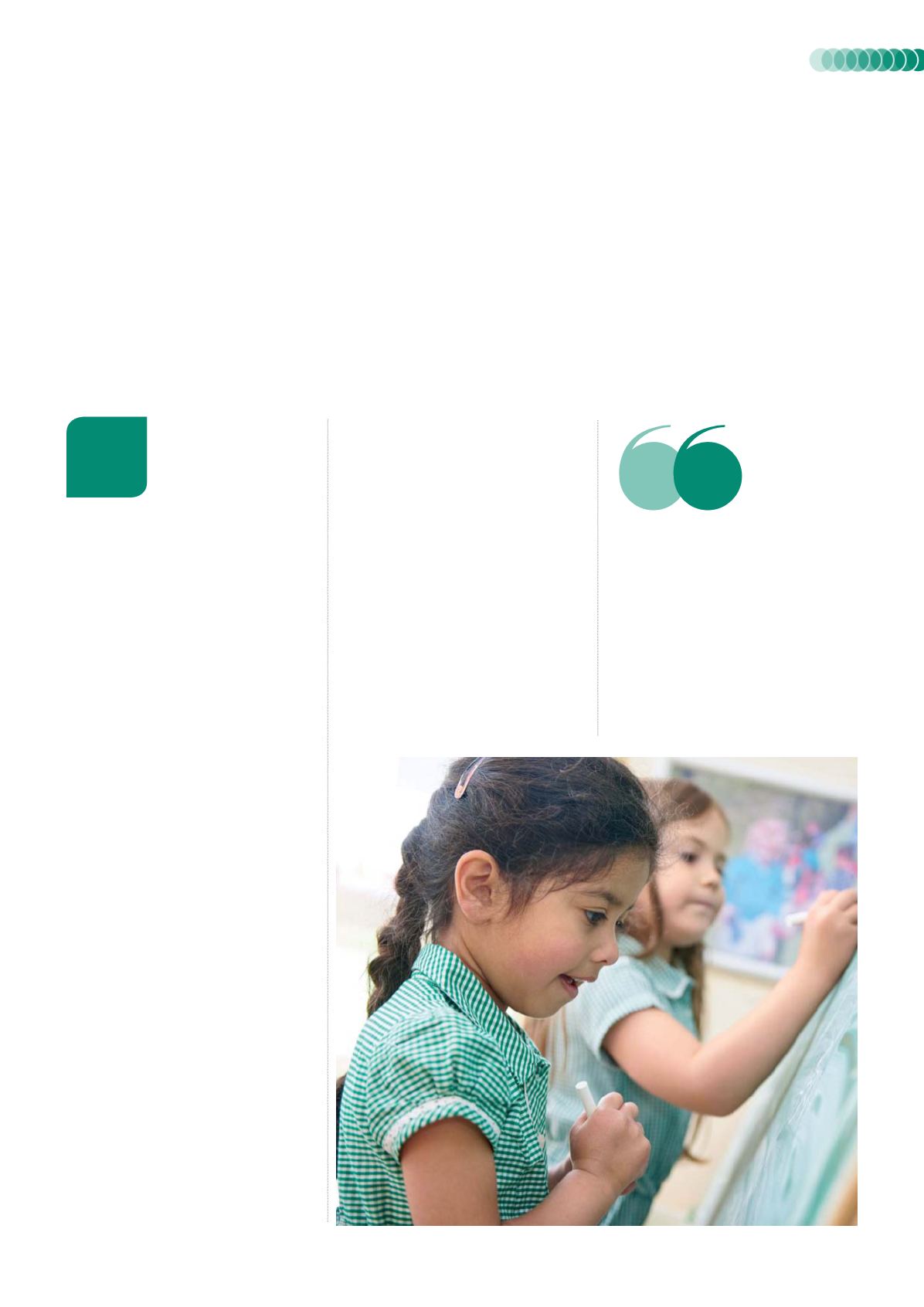
earlyyears.teachwire.net
57
nursery business
Paper-based approaches to recording children’s progress may be tried and
tested, but their electronic equivalents offer functionality that can make
running an outstanding nursery easier, explains
Deborah Fielden
...
he day of an early
years practitioner is an
extremely busy one.
From the moment that
children and their families
are welcomed into the setting, staff
work hard carrying out a wide range
of roles and responsibilities in order
to establish and maintain safe and
stimulating environments, ensuring
every child is happy and has their
learning and development promoted
and supported effectively.
Central to this process is the practice
of observing and assessing each child’s
starting points, learning styles, progress
and achievements, in partnership
with parents and carers. However,
ask settings about this part of their
professional role and you’ll soon realise
that many spend considerable time
reflecting upon their practice in an effort
to make improvements, and are always
looking for solutions to make their
systems more efficient and effective.
Enter technology, which seems to
have provided an effective solution. Over
the last couple of years, an increasing
number of companies have produced
electronic (e-) learning journal software
to support the process and recording of
observations and assessments, as well as
the tracking of both individual and groups
of children’s progress and achievements.
Converts talk of how the introduction of
this software has had an overwhelmingly
positive effect on the quality of their
practice and argue that the initial expense
purchasing the software has been money
very well spent.
But what exactly are the benefits?
TIME & MONEY
There are never enough hours in the day
to complete and record observations and
assessments of every child on a regular
basis. For many practitioners, keeping
their key children’s paper learning
journeys up to date has become both a
chore and a luxury. Non-contact time is
rarely guaranteed and even when it is
available, it means that practitioners have
to spend large amounts of time away
from their most important role – that of
being with the children – in order to
print, cut out and stick and annotate
photographs, and transfer information to
assessment and tracking grids.
E-learning journals provide a far more
time-efficient way of collecting and
collating all this information without
practitioners even needing to leave the
room. Paperwork is minimised, storage
space is freed up and money spent on
printer ink, paper, scrapbooks and
folders is saved!
Parents can
add their own
observations and
photographs from
home, opening
new lines of
communication.
Why you’ll love
e-learning journals
T


